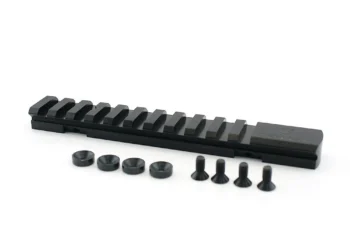Multilayer PCBs are a major leap in electronic technology. Multilayer PCBs are more versatile and functional than single-layer or double-layer ones. This article will define, manufacture, and apply multilayer PCBs, illuminating PCB technology’s changing landscape.
Multilayer PCBs consist of multiple layers of substrate material with copper traces interconnecting them. These layers are laminated together, forming a compact and efficient electronic circuit.
Evolution of PCBs: The journey from single-layer to multilayer PCBs marks a crucial evolution in electronics manufacturing. Understanding this evolution provides insight into the complexity and capabilities of modern PCB technology.
Importance of Multilayer PCBs
Increased Complexity and Functionality: A major benefit of multilayer PCBs is their capacity to handle complicated circuits. This feature is vital for developing advanced electronic devices with intricate functionalities.
Space Efficiency: Multilayer PCBs excel in space efficiency, enabling the design of compact electronic devices. This is particularly crucial in industries where miniaturization is a key consideration.
Manufacturing Process of Multilayer PCBs
Layer Stacking: The process begins with layer stacking, where individual PCB layers are aligned to ensure proper connectivity. This phase sets the foundation for the entire manufacturing process.
Lamination Process: Lamination involves bonding the stacked layers using heat and pressure. This step is critical for achieving a robust and cohesive multilayer structure.
Copper Cladding: Copper cladding is applied to the outer surfaces of the laminated structure, creating the conductive pathways necessary for the functioning of the PCB.
Advantages of Multilayer PCBs
Enhanced Performance: Multilayer PCBs offer superior performance due to their ability to handle complex circuits. This results in enhanced speed, efficiency, and overall reliability.
Signal Integrity: Maintaining signal integrity is crucial in electronic design. Multilayer PCBs excel in minimizing signal interference, ensuring the integrity of data transmission.
Electrical interference reduced: The layered architecture reduces electromagnetic interference, improving electronic device electromagnetic compatibility.
Choosing the Right Multilayer PCB Manufacturer
Key Considerations: Multilayer PCB manufacturer is essential for ensuring the quality and performance of multilayer PCBs. Considerations include experience, certifications, and customer reviews.
Quality Assurance: A reputable manufacturer adheres to strict quality assurance measures, including testing and inspection protocols. This ensures that the delivered PCBs meet industry standards.
Online Quotation for Multilayer PCBs
Simplifying the Procurement Process: Online quotation systems streamline the procurement of multilayer PCBs, providing quick and accurate cost estimates. This convenience is particularly beneficial for businesses with tight deadlines.
Instant Price Estimates: Obtaining instant price estimates online enables businesses to plan their budgets effectively. This transparency in pricing contributes to a more efficient and informed decision-making process.
Trends and Innovations in Multilayer PCB Technology
Miniaturization: The ongoing trend of miniaturization in electronics drives innovations in multilayer PCB technology. Smaller, more powerful devices are made possible through advancements in PCB design.
High-Speed Design: As electronic devices demand higher speeds, multilayer PCBs are at the forefront of high-speed design, meeting the requirements of data-intensive applications.
Challenges in Multilayer PCB Design and Manufacturing
Thermal Management: Managing heat dissipation is challenging in multilayer PCBs, especially compact designs. Innovative thermal solutions are crucial to prevent overheating and ensure optimal performance.
Cost Considerations: While multilayer PCBs offer numerous benefits, the associated manufacturing costs can be challenging for budget-conscious projects. Balancing performance with cost-effectiveness is key.
Case Studies: Successful Implementations of Multilayer PCBs
Real-world Examples: Exploring case studies provides valuable insights into successfully integrating multilayer PCBs in various industries. Real-world examples showcase the versatility and impact of this technology.
Future Prospects of Multilayer PCBs
Emerging Technologies” The future of multilayer PCBs holds promise with emerging technologies such as flexible and hybrid PCBs. These innovations open up new possibilities for electronic design.
Market Growth: Anticipated market growth in the multilayer PCB sector reflects the increasing demand for advanced electronic devices. Manufacturers and designers should stay abreast of market trends for strategic planning.
Choosing the Right PCB Supplier
Selecting the right PCB supplier is a decision fraught with implications for your project’s success. Factors such as manufacturing capabilities, quality standards, and pricing structures are pivotal in this choice. Fortunately, the online quotation process is a valuable tool in evaluating potential suppliers, allowing you to make informed decisions that align with your project’s requirements.
Online Quotation Process
Obtaining a PCB online quotation may seem complex, but a systematic approach can simplify the process. Begin by providing detailed information about your project, including specifications, quantity, and special requirements. The online tools reputable suppliers provide guide you through each step, ensuring the quotation is tailored to your needs.
Comparing Quotations
Not all quotations are created equal, and a thorough comparison is essential. Evaluate the bottom line and the services included in the quote. Transparent pricing and a detailed breakdown of costs contribute to a more accurate assessment of value for money.
Factors Affecting PCB Online Quotations
Several factors influence the cost of PCB online quotations, and understanding these variables is key to receiving an accurate quotation. The final pricing depends on design intricacy, materials, and production volume. Understanding these aspects lets you make budget-friendly and goal-oriented decisions.
Customization and Special Requirements
No two projects are identical, and the ability to customize quotations is a valuable feature. Communicate any special requirements or unique aspects of your project during the quotation process. This ensures that the quote reflects the specific needs of your project, preventing surprises down the line.
Quality Assurance in PCB Quotations
While cost is a significant consideration, the importance of quality must be balanced. A low-priced PCB is of little value if it fails to meet the necessary standards. Ensure the quoted price aligns with the supplier’s commitment to quality, balancing affordability and reliability.
Turnaround Time and Delivery
Time is often of the essence in electronics projects, and the turnaround time offered by a supplier can significantly impact your project timeline. Factor in delivery options, considering the cost implications of different shipping methods. A comprehensive quotation should clarify these aspects, allowing you to plan your project confidently.
Industry Trends in PCB Quotations
The landscape of PCB quotations is not static; it evolves with technological advancements and industry trends. Stay informed about the latest innovations in the quotation process, as they may present opportunities for cost savings or enhanced services.
Conclusion
In conclusion, multilayer PCBs revolutionize electrical design by improving functionality, space efficiency, and dependability. Miniaturization, high-speed design, and future technologies will increase demand for multilayer PCBs. In the dynamic multilayer PCB industry, firms and designers must choose the correct manufacturer and follow market trends.







